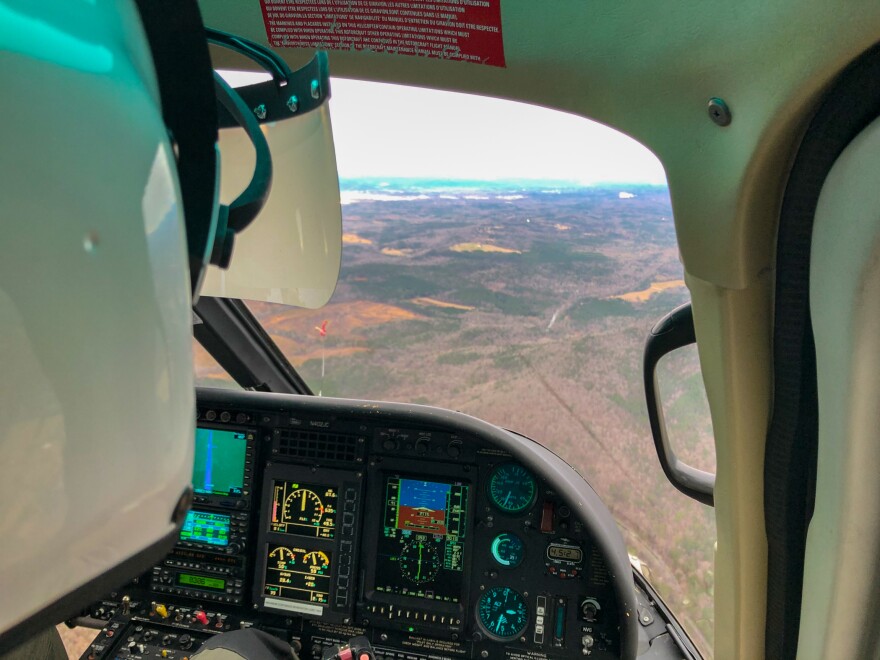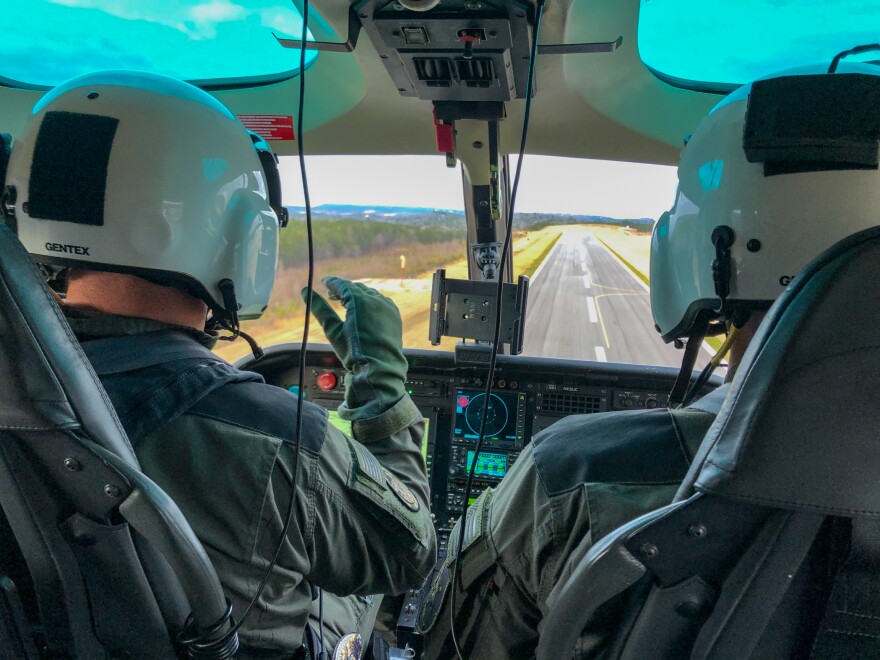Aviation has a problem that has vexed the industry for decades: when pilots unintentionally fly into clouds, lose control and crash.
From the dawn of aviation until now, it's caused thousands of accidents. It happens to student pilots and some of the most experienced aviators.
Just in the last month, that's believed to be what happened in two fatal National Guard helicopter crashes in Idaho and New York that killed six people. And, last week, the National Transportation Safety Board determined that's why a helicopter crashed in 2020, killing basketball star Kobe Bryant and eight others.
"In this situation, this weather did not sneak up on the pilot very quickly," said NTSB lead investigator Bill English about the Bryant crash. "Good people can make a bad decision and we really want to get at the bottom of why."
The pilot of that flight pressed on even as the weather in southern California worsened. He kept talking to air traffic controllers and bypassing airports where he could have landed. Eventually he flew into clouds and lost control. NTSB Vice Chairman Bruce Landsberg was blunt during the hearing: "We pretty much know what happened. We have a very good idea of why it happened. And we absolutely know how to prevent these kinds of crashes."
Now, new virtual reality technology rolling out this month aims to help pilots make better decisions.
On a recent overcast afternoon near Birmingham, Ala., a helicopter of the Jefferson County Sheriff's Office prepared for take off. Pilots Jonathan Johnson and Jerry Griffin scanned the instruments and looked for other aircraft before lifting off from the Bessemer Airport.
It wasn't a typical training flight. For the first time, Johnson was trying out a new virtual reality system that can simulate all sorts of weather as he flies along. Normally, when pilots train for cloudy conditions, they slip on a view-limiting device that prevents them from seeing anything outside.
This system is different. Strapped to the front of Johnson's helmet is a clear plastic film. He could see inside and outside the cockpit. But, with a tap on an iPad, what the pilot sees can change quickly. As the system initialized, Johnson remarked, "The visibility is reduced a little bit. But I still got the horizon. I can see it's a little more foggy."

As Johnson flew on, the program kept making the weather worse. The clouds got lower. The visibility degraded. And it was all happening as he looked through the windshield. What he saw was very different to what's actually outside. This is what might happen on an actual flight in bad weather. The situation was challenging the pilot whether to press on into what would be uncertain conditions or divert and land short of his destination.
(There is always a second pilot in a training scenario like this one who monitors the flight and is ready to take over if needed. With this technology, it is that 'backup' pilot who would control the software and training scenario. But on this particular flight, there was a backseat observer operating the iPad so there were no distractions.)
Full-motion flight simulators have been around for decades. But, on the ground, they can't mimic certain types of in-flight dangers such as spatial disorientation. That's a confusing phenomenon where the mind and body feel one thing — but the cockpit instruments show another. That's what investigators say happened in the Kobe Bryant crash.

This new virtual reality technology is hoped to prevent that in the future - by making pilots aware of how dangerous it can be to press on and put them in situations that mimic flying in challenging weather.
The technology was created by a company called AT Systems. President Tyson Phillips said the premise is quite simple. "I want to scare the pilot. I want you to understand that you do not want to be in these conditions in the real world. I want to scare you to make a better decision."
Phillips is also a Blackhawk instructor pilot in the Oklahoma Air National Guard and formed the company after a fatal 2015 crash of a military helicopter in Louisiana.
For the past year, the Army has tested this virtual reality system on its ground simulators and, in the next month, is scheduled to fly it in actual conditions.
It's also being tested by several law enforcement and emergency medical agencies now.
The virtual reality system can be programmed for all sorts of weather scenarios and even replicate previous accidents.
Tony Kern is CEO of Convergent Performance, a company that works to reduce human error in aviation. As cockpits have become more computerized, pilots sometimes have taken more risks relying on their machines to get them out of bad situations. "When technology makes it easier for us, we get mentally lazy and that's not on the engineers. That's on us as professional aviators," Kern said.
![Pilot Jonathan Johnson (left) says the VR technology was "like no other [training] flight I've flown." Pilot Jerry Griffin (right) says, "It doesn't get any realer than that."](https://npr.brightspotcdn.com/dims4/default/407c0e8/2147483647/strip/true/crop/1865x1398+0+0/resize/880x660!/quality/90/?url=https%3A%2F%2Fmedia.npr.org%2Fassets%2Fimg%2F2021%2F02%2F13%2Fflight_2-cd821030db84970ea659cc1272cbb2eda2a39f92.jpg)
Back on the ground, after the hour-long training flight, pilot Jonathan Johnson liked what he saw, saying it was very realistic. "We think sometimes that we're invincible and that we can push into it. And then if you're not prepared and not trained up for it, it can be fatal."
Once a pilot mistakenly enters the clouds it doesn't take long for problems to crop up. The U.S. Helicopter Safety Team says a pilot who enters clouds by mistake will likely lose control and crash within 56 seconds. That's what happened in the Kobe Bryant crash and it's why training in real-world scenarios is so important to cut down on the accident rate.
Copyright 2022 NPR. To see more, visit https://www.npr.org.



